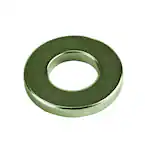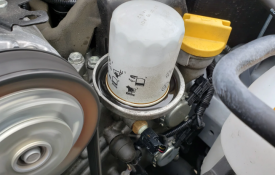-OK, bear with me here. For those who do not use or like FRAM filters, exit now.
-I have the old SPOOFAK from Bergmen on my C-10. I use the FRAM 7317 filter.
-FRAM 6017A is the equivalent of the Kawasaki filter for the C-14
-I could not find any reference for using the 7317 on the C-14 in all books I found.-
-Most companies that make filters use a proprietary prefix and the FRAM filter number.
-Only one cross reference was found, Wal-Mart, ok for lawn mowers and your '75 Volare with a slant-6 but not my C-14. Not sure who makes them for Wal-Mart but my luck, it would be FRAM!
-The other day while perusing a FRAM cross reference book, I looked up WIX filter equivalents to FRAM filters.
-The WIX filter number for FRAM 6017 and 7317 are the same.
-Therefore, I'm thinking the 6017A and the 7317 have the same internals., externally the 7317 is a bit longer.
-So, 7317 or a WIX.
Now, if someone can make a SPOOFAK for old KZ motors, wait, my '82 KZ550A had the same cartridge filter and housing as the C-10, think the SPOOFAK for the C-10 would bolt up to the KZ? That would be bodacious.
That would be bodacious.
-I have the old SPOOFAK from Bergmen on my C-10. I use the FRAM 7317 filter.
-FRAM 6017A is the equivalent of the Kawasaki filter for the C-14
-I could not find any reference for using the 7317 on the C-14 in all books I found.-
-Most companies that make filters use a proprietary prefix and the FRAM filter number.
-Only one cross reference was found, Wal-Mart, ok for lawn mowers and your '75 Volare with a slant-6 but not my C-14. Not sure who makes them for Wal-Mart but my luck, it would be FRAM!
-The other day while perusing a FRAM cross reference book, I looked up WIX filter equivalents to FRAM filters.
-The WIX filter number for FRAM 6017 and 7317 are the same.
-Therefore, I'm thinking the 6017A and the 7317 have the same internals., externally the 7317 is a bit longer.
-So, 7317 or a WIX.
Now, if someone can make a SPOOFAK for old KZ motors, wait, my '82 KZ550A had the same cartridge filter and housing as the C-10, think the SPOOFAK for the C-10 would bolt up to the KZ?
Last edited:




